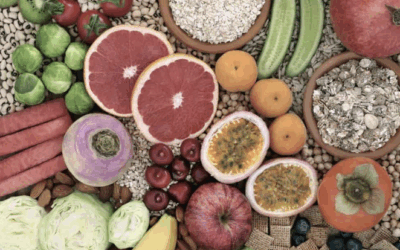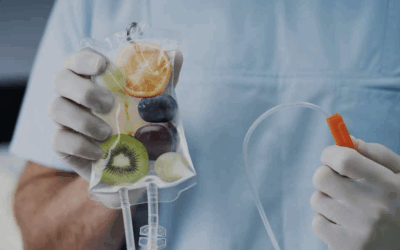Functional Medicine Treatment For Acne
What is acne?
While it’s common to have the odd pimple here and there, acne tends to be a more severe presentation of pimples, whether on the face, back or chest, that can hang around for an extended period. This type of acne is called Acne vulgaris, that typically presents in the t-zone on your face, with a mix of whiteheads, blackheads and general redness around the affected area.
Then there’s Acne conglobata, also known as Cystic Acne, which are large, hard raised bumps under the skin that may never erupt into a pimple. These form of acne tend to penetrate deeper into the skin layers, are often painful to touch, and can last weeks, sometimes months. Cystic acne tends to appear along the lower half of the face around the jawline, as well as the chest, neck, back and shoulders.
A deeper look
Want to treat acne naturally and permanently? Unfortunately conventional medicine practitioners leave many acne sufferers frustrated by acne they can’t seem to get rid of. Thankfully, our understanding of how acne comes about is very well understood, and there are several ways to clear up acne without any side effects or scarring. Identifying the cause and other factors that contribute to acne, and addressing them, is the key to treating acne naturally, getting rid of acne for good.
Our patients are seeing results they’ve been trying to achieve for years through conventional medicine. See the difference our approach to healthcare can make in the before and after photos below.
What causes acne?
1. Estrogen Dominance
Estrogen dominance occurs when oestrogen levels are in excess relative to progesterone. Estrogen and progesterone work like two sides of a seesaw that moves up and down throughout the body’s hormonal cycle, and a delicate balance between the hormones is required to maintain health. A disruption in the oestrogen to progesterone balance can mean that you have normal oestrogen and low progesterone, or high oestrogen and normal progesterone. An oestrogen dominant state can have far-reaching effects in the body – one being acne.
Estrogen dominance can be caused by:
- A missing cofactor for an enzyme (COMT: catechol oxygen methyltransferase) that breaks down the active form of oestrogen into an inert form, resulting in excess estrogen levels, particularly damaging forms of oestrogen, circulating in the body
- Exposure to environmental toxins that mimic oestrogen (called ‘xenoestrogens’, such as those found in plastics and pesticides) that disrupt hormone balance
- Taking the oral contraceptive pill. Yes, sometimes the oral contraceptive pill can cause acne, even though it can be used to treat acne. There are women who start taking the oral contraceptive pill for contraception that end up with acne due to this
Key signs/symptoms of estrogen dominance include:
- Mood swings
- PMS
- Headaches
- Anxiety
- Weight gain
- Bloating
Women suffering from acne might see an increase or decrease in size and severity of their acne around the commencement of their menstrual cycle.
2. Androgen excess
Androgen excess is characterised by excess androgenic hormone testosterone that increases the production of sebum (oil) in the skin, and overproduction of keratin – a protein in skin cells – that can block pores. Excess testosterone can be caused by:
- Polycystic ovarian syndrome (PCOS)
- A genetic polymorphism (mutation) that increases the activity of enzyme 5-alpha-reductase that converts testosterone into the more potent dihydrotestosterone form
- Stress – causing the adrenals to secrete more androgens (testosterone)
Key signs/symptoms of excess testosterone include:
- Dark, thick hair growth on face, neck, chest, abdomen
- Irregular periods
- Acne
- Android ‘apple’ body shape (a higher waist circumference)
3. Diet & Nutrition
The food and acne connection – what’s the truth about a poor diet causing acne? Do dairy and sugar cause acne?
You might be wondering ‘Why me? I eat a healthy diet, and I still have acne! And somehow, my friends who eat junk food and drink alcohol, don’t!’.
There’s a belief that junk food and high sugar diets cause acne, possibly because teenagers, the biggest acne sufferers, tend to have a poor diet. While a high carbohydrate diet can cause an increase in the conversion of testosterone to the more potent form (DHT) which contributes to acne, healthy eaters also get acne, showing that diet plays a smaller role in acne than often thought.
Diet can be a cause of acne, although more commonly, it’s a contributing factor more than a sole cause.
This small group of people are likely sensitive to changes in insulin-like growth factor-1 (IGF-1) which can be in high glycemic index (high sugar) diets, or diets containing dairy products that contain IGF-1. Receptors for IGF-1 are present in the sebaceous gland in the skin that’s responsible for producing sebum. When IGF-1 binds to these receptors, it stimulates sebum production.
Many patients who come to our clinic have previously tried a low glycaemic index diet, and removed dairy from their diet, hoping this will cure their acne. It can certainly be a contributing factor, though rarely are these factors the sole cause, which is why most people trying this approach fail.
The other diet-related factor that can play a role in acne is food sensitivities. That is where the body creates an immune-mediated response to a food (or foods); however, sensitivities tend to simply make acne worse, rather than cause it.
Considerations
When healing acne one must consider a few factors such as:
- Optimal metabolic detoxification and pathways
- Hormone Balance
- Underlying issues such as PCOS
- Food Sensitivities
Key Nutrients For Healing:
Vitamin A can reduce sebum and keratin overproduction, whereas zinc helps to accelerate skin healing, tissue regeneration and strengthens the immune system to protect against bacterial infection.
Zinc can also reduce the conversion of testosterone to DHT, thereby reducing sebum and keratin production.
Docosahexaenoic acid (DHA) is an essential fatty acid that’s abundant in the skin. Supplementation of DHA may reduce insulin-like-growth factor (IGF-1) in the skin and halt the overproduction of keratin that leads to pimple formation.
Pulling it all together: the functional medicine approach to acne
As you can see, many factors can contribute to acne, and the course of action depends on your unique circumstances. That is why the functional medicine approach is personalised, assessing your health history alongside your genetics, diet and lifestyle, to determine the root cause of your acne. Once that’s identified, we will create a personalised treatment plan to address the cause and resolve the acne for good. So our naturopathic doctors look at:
- Your health history, including family health and genetic factors
- Hormonal production and metabolism
- Detoxification efficiency (skin, bowels, liver, kidneys, lymphatic)
- Stress and the endocrine system
- Digestive system health (microbiome)
- Immune health and inflammation
- Dietary factors – insulin sensitivity, food intolerances
- Nutritional status
- Supporting skin health from the inside out – to accelerate skin healing time
For more information, reach out to the clinic so that we may assist you in your skin health journey.



